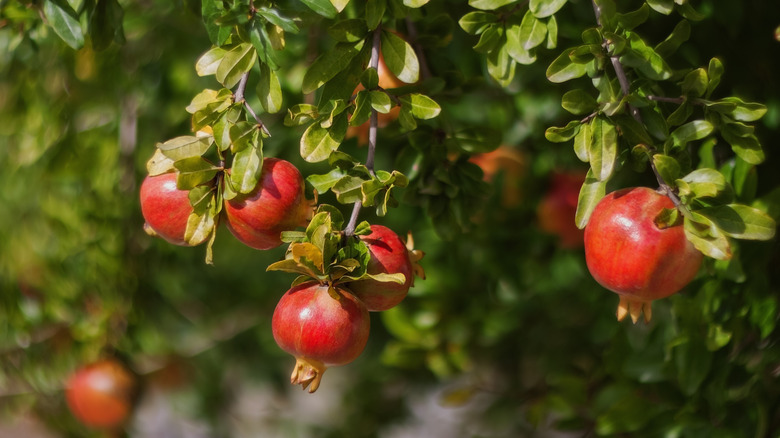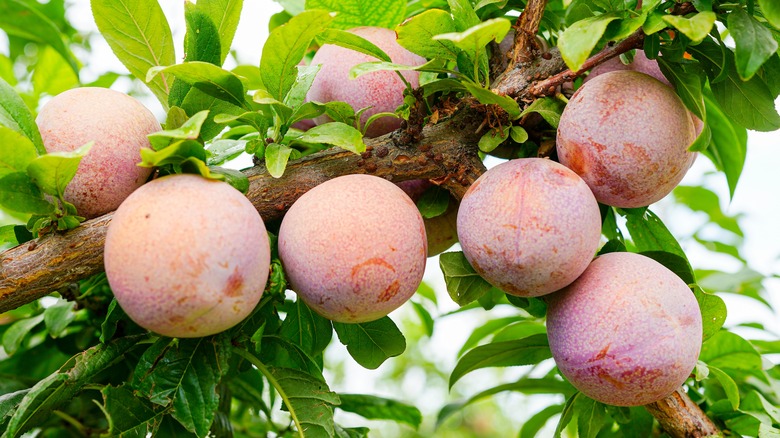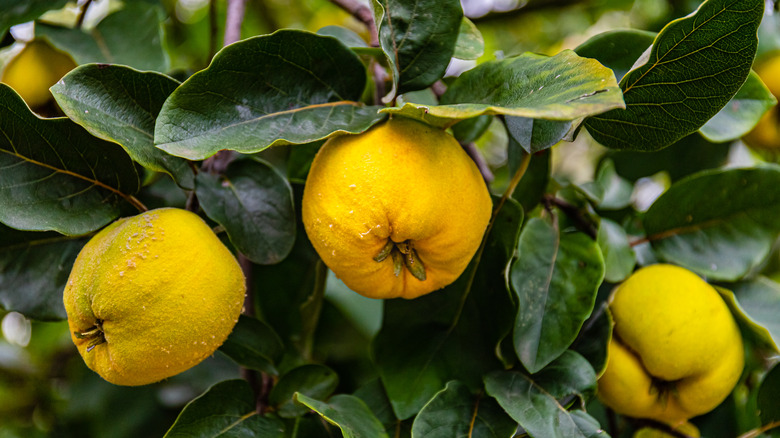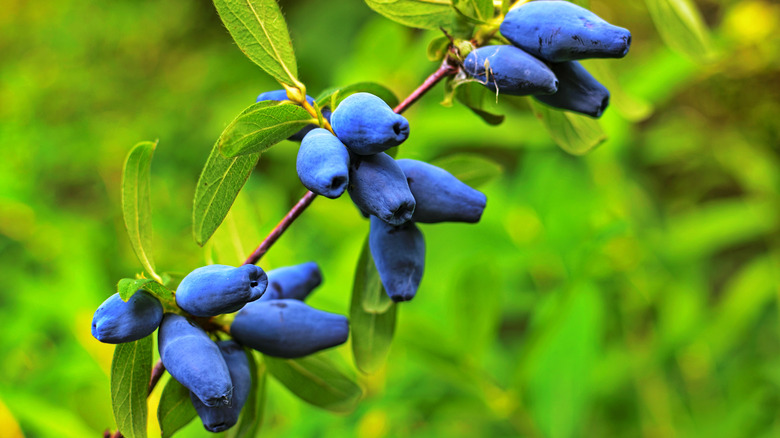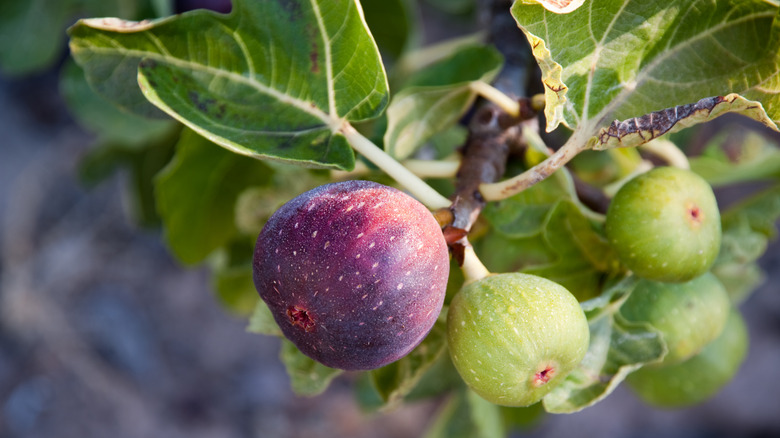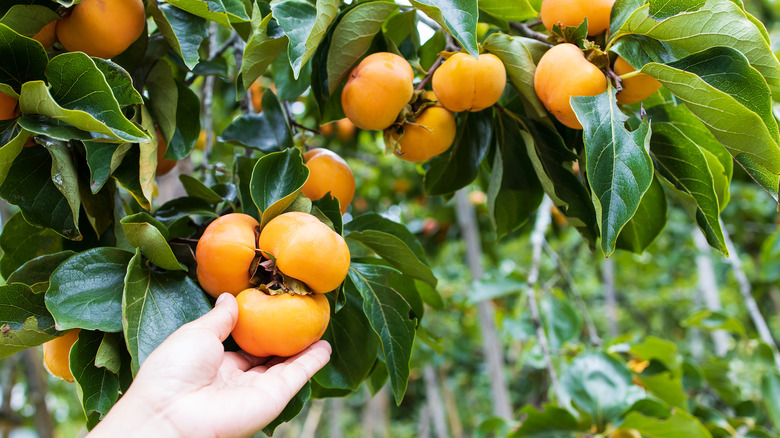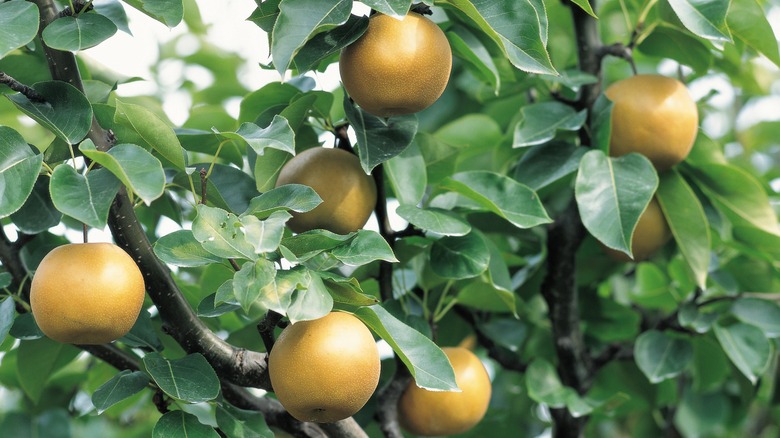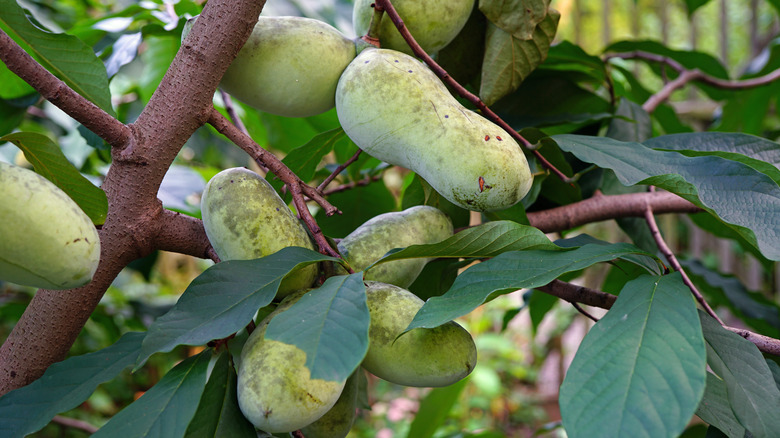Seven Uncommon Fruit Trees You Can Grow In Your Garden, According To House Digest's Orchardist
Maybe you've tried growing apples, pears, and peaches in your garden, and are ready for a new challenge, as well as some yummy additions to your fruit bowl. What about persimmons? Or pawpaws? Or Asian pears? Many people may think of unfamiliar fruits as somehow exotic when it turns out they're easily grown by the home gardener. These kinds of fruit trees may be a bit harder to find than more commonly sold fruit trees, but they're not necessarily any more difficult to grow.
Growing fruit trees that are unfamiliar may be a bit daunting, so it's important to do a bit of homework before selecting trees. Find out what different varieties and cultivars are available so you can select the ones best for your preferences, needs, and situation. Some different cultivars of the same variety of fruit may have earlier spring blooming times than others, or later harvesting times in the autumn, so you can choose what works best for you.
There are plenty of possibilities for growing unusual fruit trees, suitable for different climates, spaces, soil conditions, and growing zones. Some of these unusual fruits hail from tropical zones, while others are suited to temperate or even cold zones. Some may need to have a pollinator tree to produce fruit. This selection of trees has something for everyone interested in expanding their fruit tree selection.
Pluot tree
The pluot is a hybrid fruit that crosses a plum with an apricot. The original plum-apricot hybrids were first-generation hybrids called "plumcots" and also occasionally "apriplums." The pluot or aprium is a second-generation hybrid crossing these two Prunus species, specifically including a Japanese plum tree. They're also called "interspecific plums." This juicy, pink-tinged orange fruit has the firm flesh of an apricot combined with the juicy sweetness of a plum. There are several varieties available from vendors like Groworganic.com, with delicious-sounding names like Flavor King, Raspberry Jewel, Geo Pride, Flavorosa, and Emerald Drop.
Quince tree
When planting quince fruits it's important to select the right tree. There are several flowering ornamental quince shrubs (Chaenomeles speciosa), and while some may produce small fruits, these are not really quince fruit trees (Cydonia oblonga). These vigorous native quince shrubs are often used as rootstock for grafted flowering quinces, so be sure you purchase the right type of tree. These fruits, which are ready to pick in October, are not known for fresh eating but make wonderful jams, preserves, and tarts. Placed in a bowl to ripen, they lend a subtle sweet fragrance to the room.
Honeyberry
The honeyberry (also known as a Haskap berry) grows on a large shrub that can grow up to five or six feet tall. A member of the honeysuckle family, these sweet fruits are similar in color and texture to blueberries. They're fairly easy to grow, very cold hardy, and unlike blueberries, which need acidic soil, honeyberries are tolerant of a range of soils. They need indirect sunlight and grow well at the edges of woodlands. The honeyberry comes in many delicious cultivars with colorful names like Blue Palm, Boreal Berry, and Strawberry Sensation, available from Stark Bro's growers.
Fig tree
Figs are delicious: full of fiber, with a chewy yet delicate texture. They're often thought of as a fruit suited to Mediterranean climates but can be grown in North America. The trees are attractive with large oak-like leaves. Some cold hardy fig trees can be planted in regions where the growing zone is USDA 5, 6 or 7. The Chicago fig tree cultivar is hardy to Zone 5 and has small to medium fruits, as does the Celeste fig tree (hardy to Zone 6). The English Brown Turkey is hardy to Zone 7 and produces large, purple figs.
Persimmon tree
Persimmons have long been considered a forager's delicacy. Eaten prematurely, they're very sour, but when ripe, the bright orange fruits have a sweet, delectable flavor. Persimmon trees grow wild in the southeastern US, and often reproduce by reseeding, but cultivars for planting are available. The trees are happiest in mild climates, where summers aren't too hot and winters aren't too cold, but will grow in USDA zones 4 to 9. They're not fussy about soil, and the leaves offer brilliant autumn color. They can grow up to 60 feet tall but mostly remain at 20 to 25 feet tall.
Asian pear tree
The Asian pear looks like a golden apple and has the crisp texture of an apple with a delicious pear-like flavor. The outer fruit often develops tiny brown spots on its pale gold skin, and the inner flesh is creamy white. Also known as Persian pear, Japanese pear, and other names, the Pyrus pyrifolia is native to southern China but grows well in other parts of the world. Like pears, these fruits will ripen off the tree. The trees are hardy in USDA zones 5 to 9, and do best in a well-drained, neutral pH soil.
Pawpaw tree
The pawpaw (sometimes called wild banana) is becoming more familiar to American growers and consumers. It is native to temperate zones of the Eastern US and Canada. The Asimina triloba tree produces large oblong fruits that look similar to a papaya, and have an unusual, delicious taste similar to a combination of banana, mango, and pineapple. The fruits can be eaten raw or cooked, but the leaves, bark, and seeds contain a neurotoxin. The trees are hardy to USDA Zone 5, they like fertile, slightly acidic soil, and may grow up to 30 feet tall.
